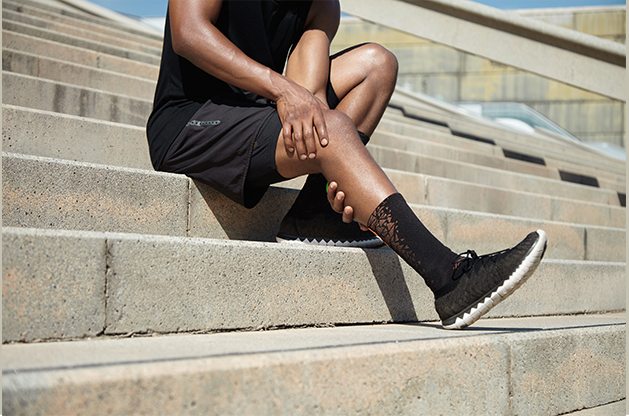Sports Injuries and Treatment at Inner North Osteopathy
Inner North Osteopathy and its highly trained Osteopaths are passionate about treating sports injuries.
Whether you are an elite sports person or the average person who exercises to keep fit, you are at risk of injury when your joint or muscle flexibility is reduced or you have specific muscle imbalances or weaknesses.
The Osteopaths at Inner North are able to assess your movement restrictions and/or tissue weakness in order to assist in your full recovery. They can also provide advice relating to prevention of re-injury, allowing you a much quicker rate of recovery and return to the sports you love doing.

Sports Injuries treated at Inner North Osteopathy Brunswick
We are enthusiastic about assessing and treating a whole range of sports injuries and we are committed to providing expert and guided exercise rehabilitation.
Common injuries we see include:
- Tendon injuries.
- Muscle tears and Injuries
- Acute and chronic knee, hip, ankle, shoulder, elbow and wrist injuries.
- Running injuries.
- Foot injuries.
- Neck and Back Strains.
- Tennis and Golfer’s Elbow.
- Achilles Sprains and Tendinitis
How are sports injuries Treated?
Treatment will often include soft tissue massage, muscle stretching and gentle joint manipulation. Prescriptive exercise rehabilitation will be provided if required. We can also provide Comprehensive Gait Analysis. At all times we work with the patient to decide which treatment course is best for them.
A referral to receive appropriate scans will be given if further diagnostic information is required. If your condition requires another opinion, or treatment approach (e.g. from sports doctor or surgeon) referral will be prompt.
Dry Needling for Sports Injuries
Dry Needling Therapy (not to be confused with acupuncture) is a technique that uses fine needles inserted into what are known as myofascial trigger points – essentially the tight points throughout your muscles that are tender to push on- along with other osteopathic techniques to relieve pain and restore function.
Don’t be scared by the name, dry needling is a relatively painless technique and many people find it more comfortable than traditional massage of tight and tender muscles.
- relaxation of tight muscles
- increased joint range of motion
- reduced pain in muscles and joints
- improved healing of strains and sprains
- improved sleep following treatment of many areas

Dry needling therapy can be used to treat patients of all ages and for a majority of musculoskeletal conditions. Some conditions it is especially effective for include:
- epicondylitis (tennis or golfers elbow)
- rotator cuff injuries
- plantar fasciitis
- ankle sprains
- chronic muscular tightness
How does shockwave therapy help with treatment?
Shockwave treatment, or ESWT, was originally developed to cure kidney stones (renal calculi) through an external application on the skin. It was created as an alternative to surgery for patients suffering from kidney stones. Further, it showed an improvement in chronic musculoskeletal conditions in a few patients who had their kidney stones successfully treated, leading to the use of radial shockwave for tendons and other soft tissues.
Shockwave therapy plays several roles in the treatment of musculoskeletal disorders, allowing for immediate improvement of symptoms and when combined with other treatment approaches, it may provide complete resolution of all symptoms.



